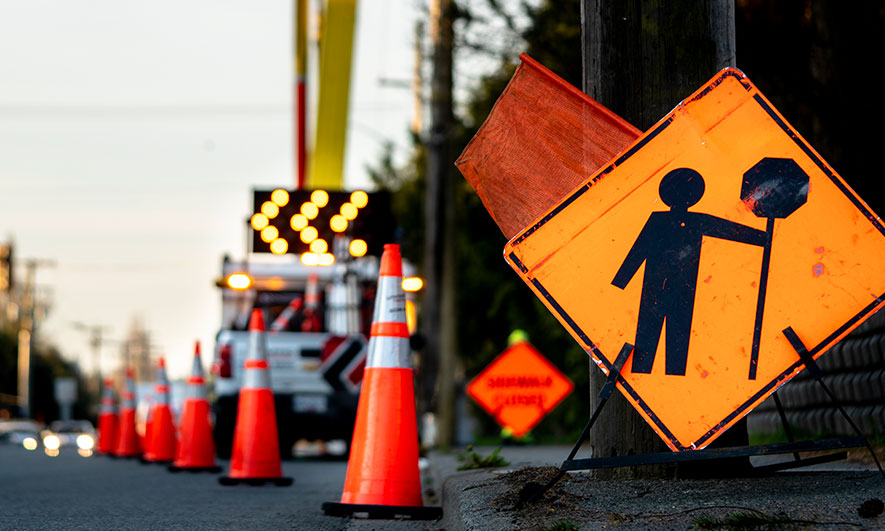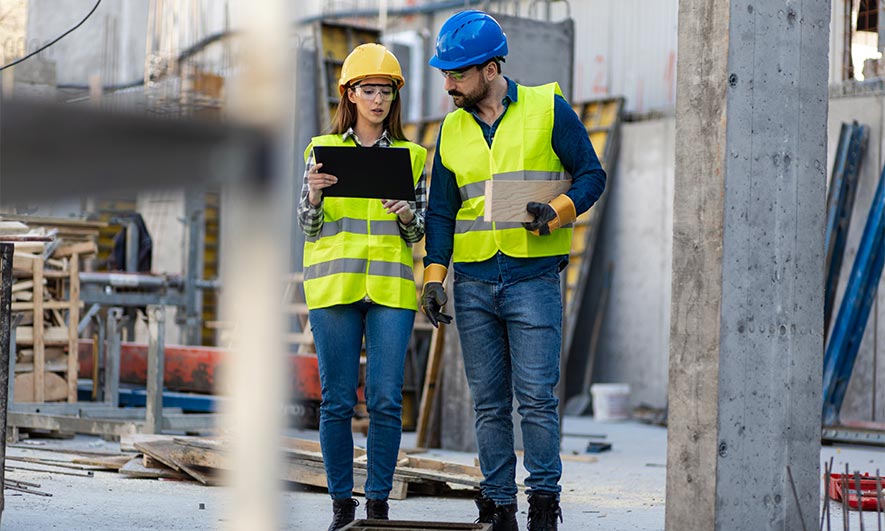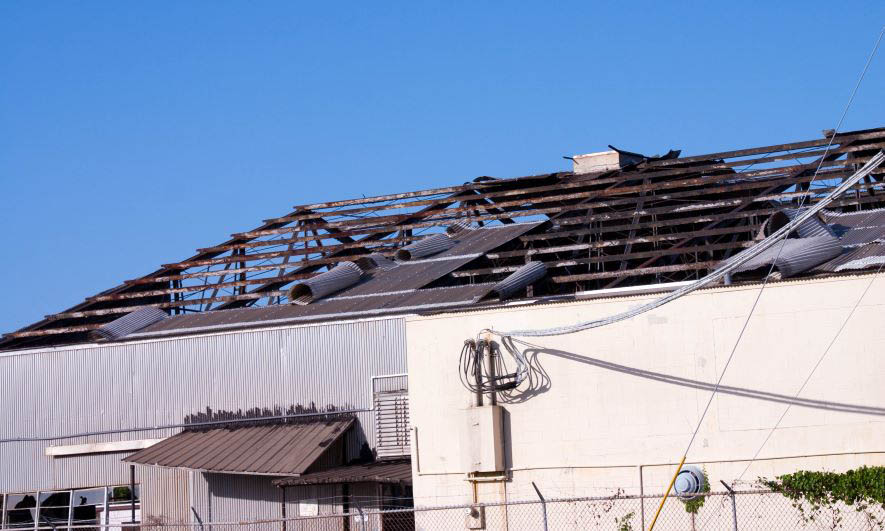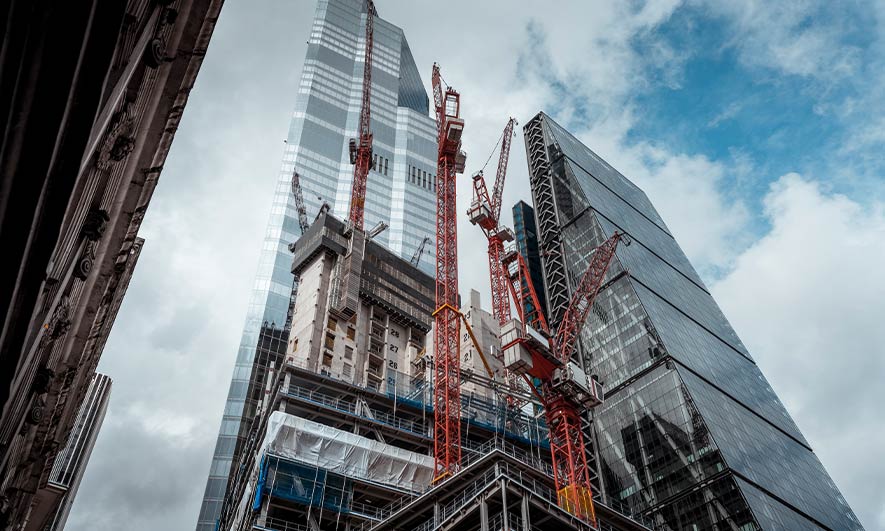
Why Work Zone Safety Is Important for Everyone
Work zones are essential to be able to maintain and upgrade our roadways. However, work zones can be dangerous because hazards often appear unexpectedly, endangering roadway workers and motorists. So, how can we make work zones safer? Creating safe work zones requires risk management strategies to be implemented by employees, supervisory personnel and contracting agencies. And putting these strategies into place is essential.
In 2020 alone, 857 people were killed and 44,000 people were injured in work zone crashes. Of those 857 fatalities, 479 were in construction zones, 314 were in work zones of unknown types, 56 were in maintenance zones and 8 were in utility zones.1
To help people better understand the importance of work zone safety, National Work Zone Awareness Week was established. The annual campaign is held at the start of construction season to encourage safe driving through highway work zones.
The Four Areas in a Traffic Control Zone
Most temporary traffic control zones are divided into four areas:3
The Advance Warning Area
This is a section of the highway where motorists are informed of the upcoming road work. This is the first notice that road users see of the work zone.3 It is important to ensure you have proper signs, arrow panels or message boards advising what motorists can expect in the upcoming work zone.
The Transition Area
This section redirects road users from their normal path away from the work zone. It is important to consider the speed limit when setting up this transition area. The higher the speed limit, the longer the transition area will need to be.3
The Activity Area
This area is the section of the highway where the work activity takes place. To ensure safety for motorists and work zone employees, it should include a space set aside for workers, equipment and materials. There should also be a space for the traffic to flow through. A work zone should include additional buffer space that separates moving vehicles from the workspace.3
The Termination Area
The area extends beyond the work zone and returns traffic to its normal flow. This often involves a downstream taper where drivers are directed by cone placement. Cones serve as a visual cue to drivers, directing them back into the original lane(s) that were closed at the start of the construction area.3
What Are the Risks of Work Zones?
Work zones cause daily disruptions to traffic patterns, narrow roadways, unexpected speed changes and other construction activities. These factors can often result in crashes, injuries and fatalities, which cause excessive delays.2 That’s why having a strategy in place is crucial in preventing serious issues.
Traffic Control Plans
Temporary traffic control zones are necessary to ensure workers are safe while on the job. However, these zones cause disruption to the normal flow of traffic and so they must be methodically developed using a traffic control plan.
A traffic control plan describes measures needed to transport motorists through a work zone. These plans can vary in detail based on the complexity of the project and should be completed for all maintenance operations and highway construction. It is important that management or supervisory personnel prepare this plan.4 Supervisory personnel can find more information on what should be included in these plans by visiting their state’s Department of Transportation website.
There are many different tools you can use to mitigate risk in your work area. We’ve put together a list of tips to help businesses stay safe within work zones.
For Engineers, Planners and Contracting Agencies:
- Do not award contracts based solely on a low bid criterion.
- Level the playing field among all potential contractors by specifying appropriate protective systems (ex. truck-mounted attenuators, concrete barricades, etc.) and requiring a written safety program in bid specifications.
- Pre-qualify all contractors and subcontractors to ensure that they have good safety records.
- Specify that the traffic control supervisor must have overall responsibility for temporary traffic control through your contract language.
- Specify a standard for illumination of work zones in bid specifications. Include minimum lighting levels, types of light sources and minimum areas to be illuminated.
- Close the road completely and reroute traffic where feasible.
- Specify increased taper lengths for night work.
- Specify the use of truck-mounted attenuators (TMAs) whenever work zones are moved.
- Plan the workspace to eliminate or decrease backing and blind spots.
For Management and Supervisory Personnel:
- Develop traffic control plans (TCPs) for all medium, large and multi-contractor jobs. For small recurrent operations such as filling potholes, routine maintenance and mowing, a checklist could be used in place of a complete TCP.
- Ensure that a trained traffic control coordinator is present at each job site.
- Train workers in the implementation of the TCP for each project.
- Hold “toolbox” meetings at the job site to discuss and report hazards and near misses. Be sure to also discuss safety considerations that are needed for performing the tasks.
- Evaluate the effectiveness of the temporary traffic control on a regular basis by walking or riding the work zone and looking for evidence of near misses (ex. skid marks, damaged barricades, etc.).
- Authorize the traffic control supervisor to temporarily halt work until unsafe conditions related to temporary traffic control have been eliminated.
- Where worker exposure to traffic cannot be completely eliminated, use positive protective barriers (ex. temporary traffic barriers) to shield workers from intrusions by traffic vehicles.
- Give employees the authority to shut down unsafe equipment without repercussion.
- Train flaggers consistent with their level of responsibility and work zone conditions and in accordance with applicable state DOT requirements. Refer to The National ATSSA Train the Trainer Flagger Registration Program for a listing of state flagger requirements.
- Avoid using flaggers under hazardous conditions, such as high traffic speeds, inclement weather, night work and other conditions which limit visibility.
- Provide fluorescent and/or retro-reflective materials on head gear and flaggers’ gloves.
- Document in writing work zone setup and changes throughout the course of the project.
For Employees Working In Work Zones:
- Wear high-visibility safety apparel when in work zones.
- Inspect high-visibility clothing regularly and report any damaged or defected clothing.
- Perform pre-shift equipment checks and report any deficiencies. Pictorial equipment checklists make equipment inspections easier.
- Read operator manuals prior to use.
- Never move equipment without making positive visual contact with any workers on foot near the equipment.
- Set parking brakes when leaving equipment unattended and chock wheels when equipment is parked on an incline.
- Always wear your seat belt.
- Report any deficiencies in the temporary traffic control setup.
- Question any portion of the TCP that you don’t understand.



